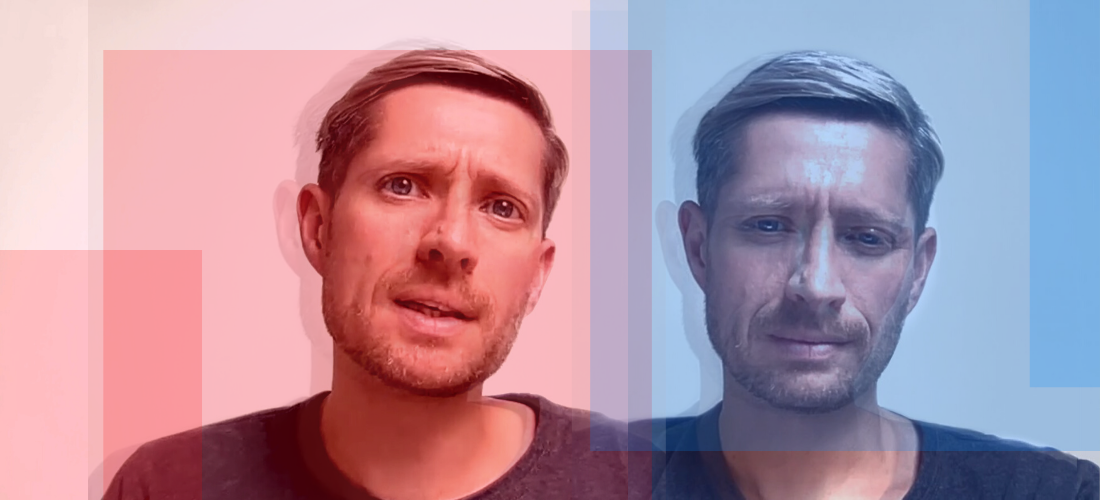By Court Wing
Leading psychedelic researcher, Robin Carhart-Harris, speaks with a participant in a psilocybin for depression trial on the potential of psychedelics.
After our Op-Ed, “Re-evaluating the Results of the Recent Trial of Psilocybin vs Escitalopram for Depression”, came out, the author, Court Wing, followed up with Dr. Carhart-Harris to discuss the results and the public’s perception of them in more depth.
The two have an intimate conversation that spans from how Carhart-Harris’s work began, how his theories, like the REBUS model, took shape, and what other applications psilocybin may have for treating mental, spiritual, and physical health conditions.
The interview has an interesting twist because Wing participated in an NYU trial of psilocybin for major depressive disorder and experienced full remission from a recurrent battle with depression after his first dose of the magic mushroom compound. Wing shares a lot of his first hand experience with Robin Carhart-Harris on how the trial he participated in changed his mood state and mindset, and what the possible neurochemical changes felt like subjectively.
Court Wing: Is this, in any way, in the arc of what you expected to see when you started out this research?
Robin Carhart-Harris: Wow. Hmm… Maybe it is. Or… no it’s not. No. [laughs] I mean, after a few years, you start to realize the therapeutic potential, or I did.
Initially, it was like, psychedelics are fascinating tools… Powerful tools to revolutionize our understanding of the mind and the brain. That’s what drew me in. And then I was like, “Oh, and the therapeutic application is actually very compelling.” Once I caught onto that (and this was probably sort of midway through my PhD in the late noughties, you know, late 2000s). Then, I remember, Ben Sessa was trying to get a psilocybin for alcoholism study going at Bristol, where I was doing my Ph.D. We had meetings with seniority, who basically weren’t interested in our idea. And then I said, “Leave it ten years,” and we’ll be able to do this research. I think someone said once, “You overestimate what you can achieve in a year and underestimate what can be achieved in ten.”
That rings true. The changes in a decade have been colossal so it’s been beyond expectations, really.
CW: Personally, it’s hard not to feel a great deal of gratitude for the work that you’ve all done. As you know, I went through the NYU psilocybin study for major depressive disorder a year ago. And [now I’m in] total remission. I mean, just so unexpected. And I read the research, I saw the reports, I read the review paper of the neural mechanisms, which actually was the first thing that truly excited me because I had lost track of the prefrontal cortex atrophy and seeing words like neurogenesis, synaptogenesis, dendritic arborization; it’s like, that’s part and parcel of what I had been studying in things like chronic pain for the last ten plus years. But to go through it and to feel a physical absence of the depression; I don’t have a better term for it. Like a missing burden.
Anyways, what type of data were you seeing [early on] that made you want to pursue this on a study level? Because it’s one thing to hear about this stuff occurring anecdotally, but then to [say], “Boy, there’s enough traction there that I think we really have something”?
RCH: Yeah, yeah. I think if we rewind to the end of the 2000s or even earlier, mostly in terms of mental health data, it was abstract. It was the work done in the 50s and 60s that we looked at as a historical curiosity.
It wasn’t enough to put that and Indigenous use in [a] healing context. It wasn’t enough to put that together in my mind and think, “Oh, this is really compelling.” So a few things made the difference. And I think sometimes you need to (even though I’m a scientist, and I shouldn’t say this, in a way), you do sort of need to see things with your own eyes. And what made a big difference for me was doing our own brain imaging research.
Taking healthy volunteers, looking in their brains and seeing things that were suggestive of an antidepressant effect, and then listening to them say, “I feel lighter. I feel unburdened.” And then thinking, well, now this seems really tangible. And that makes sense in the context of Roland [Griffiths]’s work in healthy volunteers, and Charlie Grob’s work in end-of-life anxiety.
So then we started piecing things together for a UK Medical Research Council grant. And that got through. And the reviews were remarkably good. I don’t know, but I imagined some fellow researchers in this space were allowed to review our proposal and did us a favor, because the reviews across the board were top marks. And I think, then the UKMRC were in a difficult situation, because [they thought], “How do we reject this when everyone’s saying this is really top quality research that they’re proposing?” And actually, we proposed a double blind randomized control trial then in 2012 that we couldn’t complete until 2021 because of the difficulties of actually doing the research. We ended up doing that open label trial that was published.
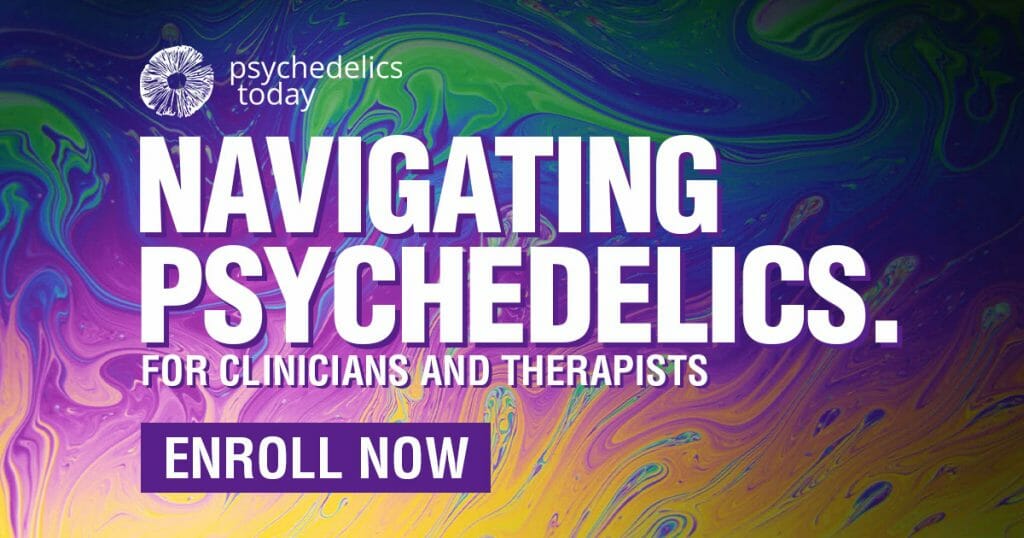
But I would say, a turning point for me was the first patient in our TRD [Treatment Resistant Depression] trial. She just responded remarkably. She visibly became a different person from heavy, head down, minimal eye contact, tearing up when starting to open up, no smiles—gosh, no, just frowns. And then, after the treatment, the warmth and the color and the smiling and a beautiful smile came on her face. And it was just a wonderful, beautiful thing. It’s such a privilege to be able to do that for someone. And that was a massive turning point. It was like, “Oh, my goodness, this really works.”
CW: Yeah. It’s startling, trying to describe to people the one-day turnaround quality of this. And I think it’s actually very much undersold, because I told the researchers, Dr. Stephen Ross at NYU and my facilitators afterwards. You know, I went through the MADRS scores, which you are now more than familiar with [laughs], and at the end of the session, one of the facilitators [asked me], “So how do you feel?” And I’m like, “Oh, good.” And then I did a deeper scan, like reflexively, and I was like, “Good.” Like, I could tell it was gone. And I was like, “That fast? Honest to God, that fast?” And they’re like, “Well, we’ll know when you’re unblinded.” But in retrospect, if I had been given the chance to take the original MADRS evaluation again, my scores would have gone higher. Because now in the absence [of depressive symptoms], I can tell how much more severe they were. It’s a strange thing.
One thing that you’ve said a couple times here, and perhaps it’s a figure of speech, but I believe there’s a somatic quality to it. And since you brought up the fMRI studies, you mentioned people discussing feeling lighter, feeling unburdened, like there’s this description of the condition that has this feeling of extreme heaviness or being bogged down. So there’s some aspect that involves this interoceptive quality where there’s obviously slower reaction times and things like that, but what do you think is operating there? Because I remember, in the fMRI studies, you guys were a little bit surprised by seeing the type of changes in blood flow that were going on. I believe, [you] expected one thing and instead ended up with something else. Do you have any thoughts to that area?
RCH: Yeah, yeah. I’ve often thought (and experience has endorsed this view) that we often intuit mechanisms through our language, the way we’re describing the experience, and whether or not there’s some kind of priming effect or not. Maybe it is [priming], but also, I’m not sure it really matters, when ultimately you do the research and see that it’s endorsed. But the analogies that you’re used to hearing today (the popular ones, or the well-used ones) around heaviness and being bogged down; it’s all weight related. There’s heaviness, there’s weight. You know, you get bogged down. So there’s a gravitational pull to the depression, which means it pulls you in and you can’t get out very easily. And I think (I’ve got to intuit, because we don’t know yet, but) it’s something to do with synaptic weighting, and that certain circuitry gets weighted. If we really zoom in on a very low level, it’s probably the synaptic weighting certain connections belonging to certain circuitry associated with heavy introspection. [They] get heavily weighted in depression.
What happens? Well, that’s another fascinating question, and maybe a different question. But let’s just say that that’s the character. On a descriptive level, that’s the character of chronic depression and a depressive episode is that you get stuck. Literally, you get stuck in a certain sort of dynamic configuration because that heavy synaptic weighting is the reinforcement of that.
CW: So is this the energy minima that you and [Karl] Friston are describing in your paper?
RCH: Yeah, it’s very relevant. In people’s people’s mind’s eyes, they can imagine a landscape. And in a depressive episode, you literally have a depression in that landscape. And if you imagine a ball being able to move in this landscape, and that being your mind at any given time, then in a depression, the ball is spending a disproportionate amount of time in the depression in that landscape. It falls in very easily, [and it’s] very difficult to get it out. And so what psychedelics are doing is just pushing up that depression and flattening the landscape.
CW: Right. I’ve heard the ski slope analogy. So either we have fresh powder that’s either filling up the depression, or we have some sort of artificial means like a snow plow that’s smoothing everything out. So if we were to just roughly characterize the nervous system as biasing towards efficiency, even if that depressor, that enemy energy minima is more efficient, it’s not necessarily more effective anymore in our daily lives. At some point, it was the 2A adaptation toward some high priority event, but now it’s become maladaptive… I listened to that lecture by Andrés Gómez Emilsson of QRI [Qualia Research Institute]. There’s this discussion of criticality with the mind and with a depression. It’s almost, to some degree, like an event horizon, almost. Right? The pull is so strong, it’s very hard to get out of there. So why is it, once that landscape is flattened, as these new neural connections in the functional connectivity are occurring, why does it resort into a better, healthier connection? I mean, if this quality of openness is being promoted, why are we defaulting back to something that’s more useful, something that’s healthier, something that’s more, I guess, effective, as well as efficient?
It’s one of the issues with doing psychedelic research. [It’s] almost by saying, “I’m a psychedelic researcher,” [that] you’re seen as somehow a lesser scientist.
-Robin Carhart-Harris
RCH: Yeah. I actually do think that the fresh covering of snow is a good analogy. So if you’re born into this world, and you haven’t been affected by life in any particular way, you have a very smooth, fresh ground of snow there. And I suppose, what’s happening with the psychedelic experience; I mean, this is very mechanistic, and is not putting much on the therapeutic component and so, that’s a little dangerous to put it all on, like, “The brain resets.”
CW: Sorry. Yeah, well, the intent makes a huge difference. That’s clear.
RCH: It does. And so, you could have the snow falling, and you can manipulate things in a way that potentially could even reinforce certain circuitry. But that doesn’t happen, because the contextual; the environment in which you have the psychedelic experience is nurturing in the way that it should be for a newborn coming into the world: You’re not trying to heavily indoctrinate them or drive them in any particular direction, other than to care for them and just say, “You are safe, and I will hold you as we move through life.”
But you know, things could go in a horrible direction there. Horrible kinds of things could happen that could start to reinforce a certain shape to the snow. And so anyway, I think it’s a mix. It’s a mix of the fresh falling of the snow [and] shaking the snow globe, [which] is the one [metaphor] that I came up with personally. But the fresh falling of the snow is like an old neuroplasticity analogy. And there is something called the plasticity paradox, which says that plasticity, in and of itself, isn’t necessarily healing, but if the plasticity comes and is utilized in a positive way (and so in the context of psychedelic therapy, it’s utilized and honest in a therapeutic way), then you have the magic sauce.
And so I like to say these days in as many interviews as I can [is] that psychedelic therapy is fundamentally a combination treatment. It’s not just shaking the snow globe. You could shake the snow globe in someone already psychologically unstable, and when the snow settles, it might not be a great picture. But you shake the snow globe in someone who’s ready for this to happen, and it happens in a perfectly nurturing, supportive environment, then the snow is going to settle. I think you can feel quite confident that the snow is going to settle in a healthier way.
CW: Do you think beyond just the psychiatric applications, which seem quite vast still—I mean, honestly, the smoking cessation and cocaine addiction early results… are just completely astonishing—but do you think there are lateral applications? Obviously, I’m quite invested in the changes that are possible, I think, for chronic pain of a potentially non-nociceptive type, but even for nociceptive chronic pain. I have to give credit here to Dr. Brendan Hussey. I saw his presentation on your REBUS model back in July with a MAPS Canada Journal Club, and he had an amazing slide deck. And, I, myself, personally, had a very deep revelation on March 6th, which was the day after I went through [psilocybin-assisted therapy] (March 5th [was] my dosing day) where it’s like, all of these things suddenly opened up where it’s like this can change this whole picture here. Once I saw Brendan’s work describing yours and I had a visual, [I realized] the REBUS model completely overlies the descriptions for the last decade and a half of what’s going on in chronic pain, in terms of how a pain neurosignature is formed. Have you thought about it at all? I think it’s like, beyond psychological.
RCH: Well, that’s fascinating. Maybe there’s some things there that I don’t know that I could learn. We are planning a chronic pain trial in fibromyalgia with psilocybin therapy.
It’ll start at the end of this year at Imperial. I’m moving to UCSF, but that trial will carry on with the money that I was lucky enough to bring in.
[It relates to] the REBUS model in the sense that the precision weighting is exactly what we’re talking about here. Assumptions are heavily weighted. Certain assumptions—you might call them pathological assumptions, you might even call them adaptive assumptions, defensive assumptions—deserve a bit of compassion, because the body of [the] mind is doing its best to try and stabilize things in a way. So in a sense, depressive episodes, eating disorders, image disorders, chronic pain, they’re often the body and the mind trying to do their best defensive strategies. But we’d rather not have them, you know? And then that takes some bravery, doesn’t it?
Perhaps this is most acute in something like anorexia, where the [adaptation] is so maladaptive, it’s killing people often. It’s ego-syntonic for the sufferer, meaning they don’t see themselves as suffering, like, “This is good, this is working.” And so, it’s adaptive, maladaptive, it depends how you look at it, but to most eyes, it’s maladaptive. But it takes bravery, because [people think], “Oh my goodness, you’re going to take away this thing that I need?” like in an addiction. Like, “I’m not ready to give this up, I need this!”
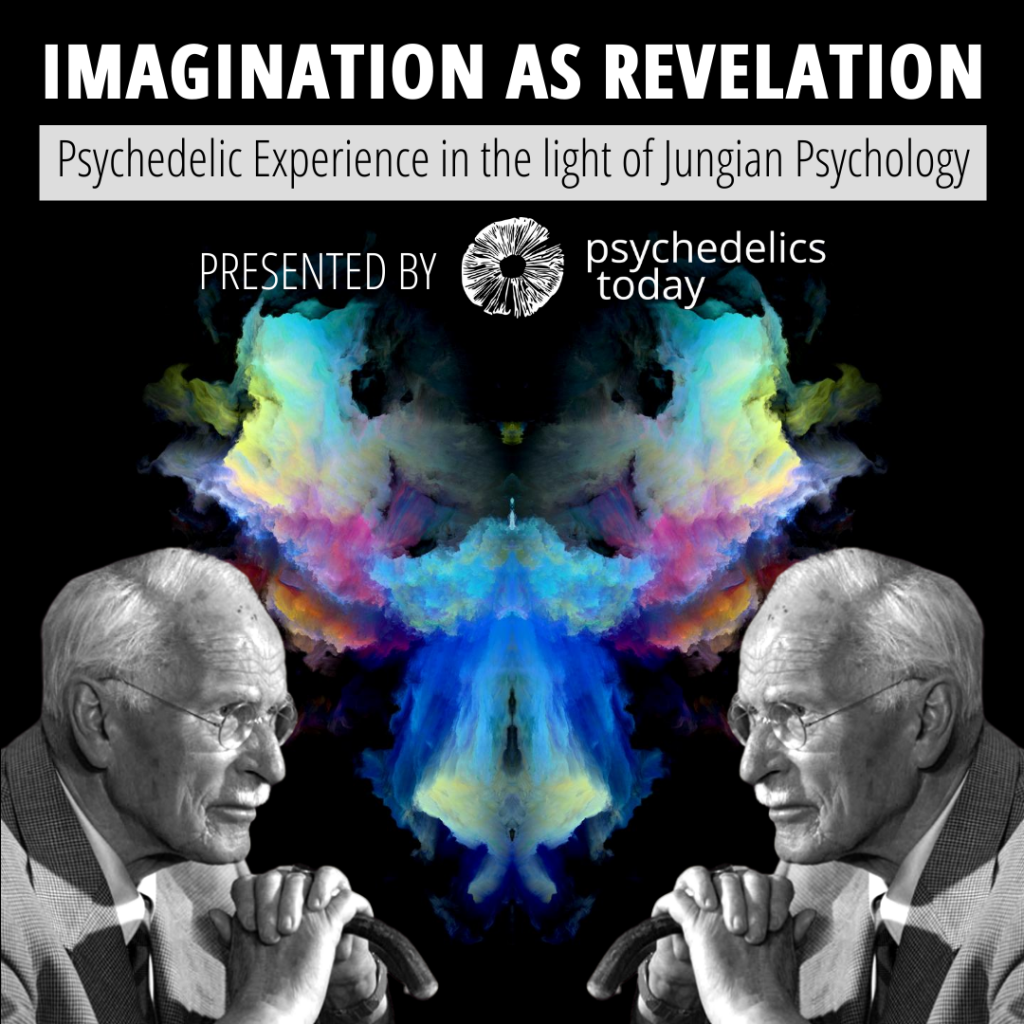
You know, and there’s sort of irony there: “I’ll die without it.” It’s like, “No, you’ll die with it.” But that’s the sort of pivot, isn’t it? And again, it brings us to the requirement. Sometimes, actually, a conscious decision needs to be made to let go, both in the experience itself, but also the decision to have the treatment in the first place.
CW: You spent the better part of a week, pre-publication [of the “Psilocybin vs. Escitalopram for Depression” trial], going through this long explanation of how someone should look at a study as both proposed and then executed, and then how the results are interpreted, and how a journal can also interpret those things. But you took it upon yourself, I think, slightly unusually, to kind of let people know: Really go to the tables, go to the appendices, that’s where you’re going to see the striking numbers. And there’s been many expert reviews saying, “Well, okay, they were wise to in fact not do an adjusted comparison, because then it doesn’t account for the random chance possibility that it’s just a statistical anomaly,” right?
At the same time, honestly, I met someone who also went through the same trial I went through up at Yale, [being treated for] 26 years of major depressive disorder and [then experiencing] full remission. We couldn’t stop going on about the MADRS [depression rating] scores. I understand the QIDS [depression symptomatology scale] one, and now there’s a little buyer’s remorse in there about like, “Ahh, why [did we choose] this one [for the psilocybin vs escitalopram study]? Why this one [QIDS]?”
RCH: [laughing] I know.
CW: And there’s been some criticism that in the prereq, if I’m saying it correctly, where there was kind of one expected outcome that was supposed to be measured, and they [New England Journal of Medicine] were saying there is one way that was registered with the US boards and another way with the UK boards, and that, in the paper itself, it didn’t actually discuss those things. But it doesn’t feel like you guys were pulling a dodge or anything like that. And I think even if people just look at the QIDS remission and response rates and the secondary outcomes; I mean, I am trying not to fanboy all over the place, but it’s so commensurate with what happened for me and what other people have described.
RCH: Yeah. It was a very interesting experience. We certainly didn’t in any way, or could be accused of pulling a dodge. I would say one way to look at how all of this has gone is that we played it so straight, and so the miss on the primary has to be reported because it was pre-registered ahead of the trial to be the primary.
Do we regret choosing the QIDS as the primary? Well, of course we do. And now we understand. Actually, and this could be sort of sour grapes, speaking to a bias in favor of psilocybin, but I do believe it’s not a great measure. And you just have to look at that forest plot that I’ve now pinned to my Twitter page, to see that it’s an anomaly. It looks like a false negative. And I think the right interpretation is that it’s likely to be a false negative and these two conditions do separate.
So we played it very straight. Was it bad luck? Well, if you believe that the ground truth is that psilocybin is the better treatment, and that hasn’t come through because of the miss on the primary, then yes, it’s bad luck. And so part of the effort in trying to get ahead of the messaging was just that; to try and keep people closer to the results themselves, and to say, “Look at the results in some detail.” And that’s quite unusual, I think, for researchers to do.
CW: Yes!
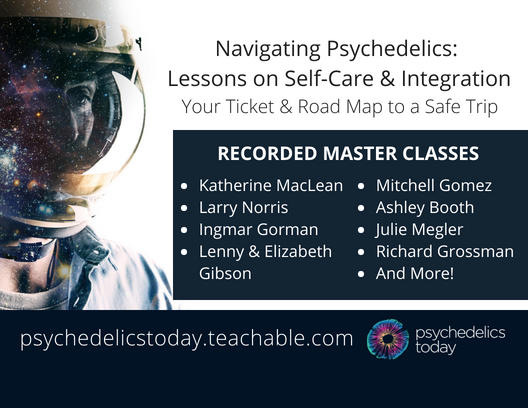
RCH: They’re often more wanting people to hear their narrative. And I was sort of, in a sense, saying, “Look beyond the narrative (because it wasn’t our narrative, it was the editor of the journal), and look at the results. And you decide.” I felt that we were made to spin the results in a way that misled the reader, that didn’t accurately represent the results. And that bothered me. So I felt I had to communicate to people early on, and I couldn’t say it at that stage, because I couldn’t reveal the results.
So all I was saying to people was trying to explain the nature of the stats, and then say, you know, if there’s anything you do here, just look at the results in detail, and go to that supplementary appendix. The way we were treated in terms of not being allowed to include that forest plot, what’s the agenda there? Hiding results? It’s very questionable. And I’ve stopped short of getting conspiratorial about it, but it’s almost like, “Well, let’s move that out of the way, and, you know, lift this one up, it’s missed on the primary.” And there was so much more to see.
It was an unusual experience. And it felt like the power of [the] deep establishment wanting to frame things a particular way, like, “Nothing to see here. Carry on, everything’s as usual everybody. SSRIs are for everybody.” I don’t know.
CW: It certainly wasn’t your first rodeo. It’s not as if you were fresh to letting results out or doing deep, intimate work with a well-received theoretical basis, right? And yet, they’re almost acting like, “Well, these young fellows, what a nice idea they have,” or something like that.
RCH: Yeah, [it’s] one of the issues with doing psychedelic research. [It’s] almost by saying, “I’m a psychedelic researcher,” [that] you’re seen as somehow a lesser scientist.
And the deep establishment has that position on things. I actually think there’s some published work on this where people have looked at the opinion of scientific peers on those who declare whether they’ve had a personal psychedelic experience or not, and it does transpire that peers view people disclosing their personal uses as suggesting that they’re a weaker scientist in some way. And that’s kind of frustrating, but it is what it is.
But there are some very high standards that we’re being assessed by here, standards that haven’t always been in place. As SSRIs have developed and got through, there’s been a lot of scandal and bad practice in terms of the data on SSRIs. So playing it very straight as we did, and, in a sense, underselling the results, I’m kind of okay with, because I know in time, the truth will [come] out. And the whole area has been getting so excited and expectations are so high that a little bit of moderation at this stage with this particular trial is probably a good thing. So I sort of accept it somewhat reluctantly, in terms of the way the paper was framed. But it got into the New England Journal of Medicine.
CW: Yes it did.
RCH: And that was really important.
CW: And even if it was a moderate, conservative, staid description of the results, the results were like: It [psilocybin] was just as good as our standard of care [SSRIs] right now. And the appendix; that’s why I wrote the Op-Ed for Psychedelics Today, just to say, look, he’s been telling us, and anyone who’s gone through this, that went into full remission, can say this is not even remotely close to the same thing. I almost wonder if the quality of remission that we’re discussing between the SSRI and psilocybin, if, internally, it’s two different types of remission? Because I’ve been on the other stuff, and this is not that. It isn’t.
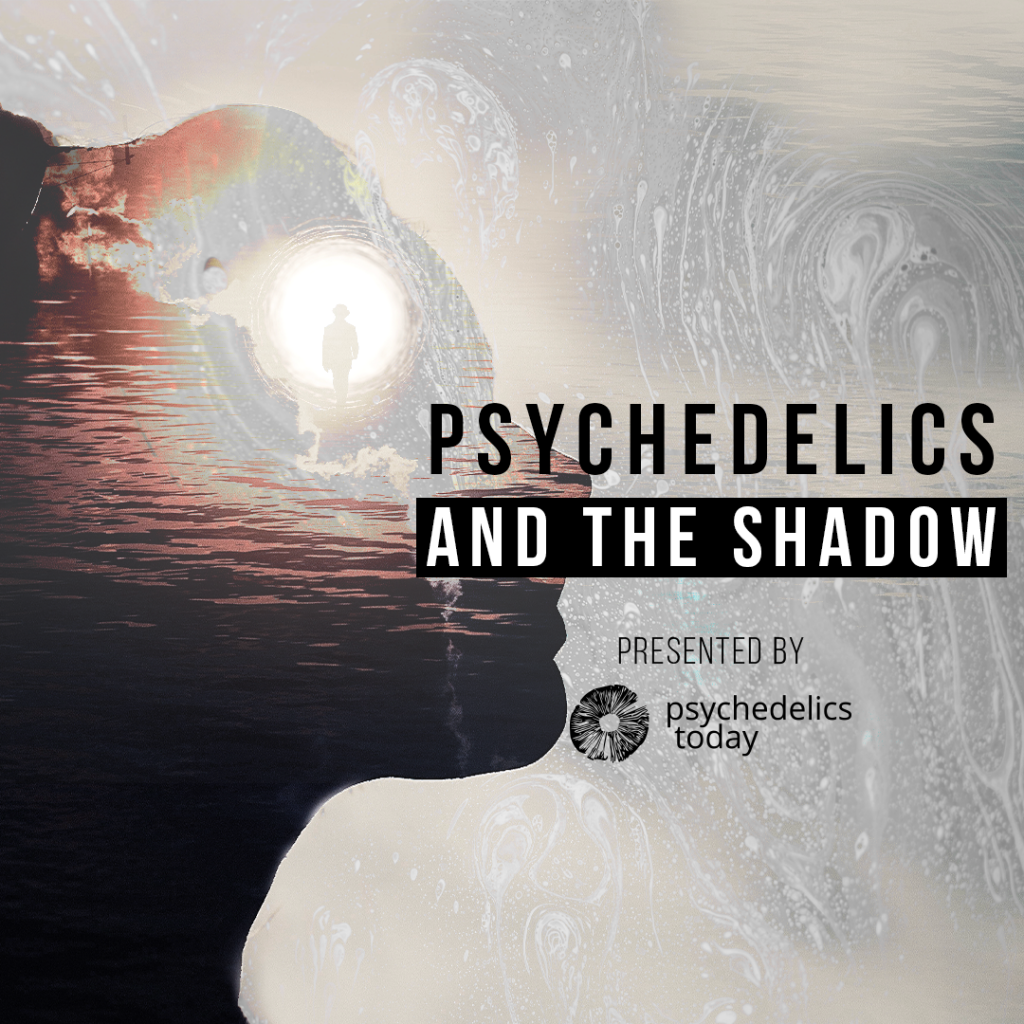
RCH: The one result that’s most impressive is probably the remission rates. What we’re seeing with the escitalopram (and this probably reflects a more general rule) is improvement in symptom severity, but not reliably into remission. I think that’s it. If remission is ultimately what you want with a treatment, which of course it is—to be free of the disorder—then you’re much more likely to achieve that (twice as likely to achieve that) on the most conservative measure on the trial with the psilocybin.
CW: I think [on] day two of the study, there [were] approximately (depending on which score you used), something like 25 to 30 plus people [who] had stopped being depressed on day two. I truly envied the fact that you guys were running a two-dose study, because it did seem like, from my perspective, even though things had gotten remarkably better [for me], that a second dose would have made a big difference.
RCH: What time point, Court, do you think a second dose would have made [the] most sense?
CW: I think you guys have got it right on the money. Honestly.
I think three weeks. It’s like you have that first week where you’re just kind of in this freefall, like, “My God, is it really this simple?” And then starting to incorporate it in the following week, you know, kind of like, “Is this stable?” Probably doing a lot of reality checking. And then [you’re] just waiting for that ghost of the previous condition to kind of re-emerge. And then by week three, you’re now actually starting to incorporate all this and it’s like, “I have more questions.” I keep regretting the time I didn’t spend under the eyeshades. [laughs]
Honestly, you know, at a certain point, there [were] things [I was] so compelled to talk about, you know? I wasn’t psychedelically naive. 25 plus years earlier, someone had led me on a set-and-setting transpersonal session with [a] high-dose [of] LSD, and that had been remarkable, honestly, for years. But this was… the psychological material that emerged, it’s like, I had no idea [that] the things that came up were going to, and so a second session, like, by week three, it’s like I had formed enough around what had occurred in the first session. It could have been five weeks and that would have been fine.
But I think if you’re talking about things in the course of treatment, like say, spatial summation vs. temporal summation, I think to kind of maintain that intensity level for that neuroplasticity to really gel, usually you need novelty and intensity. And I think Andrés Gómez Emilsson could probably argue this quality of valence. I think three weeks seems just about right. I don’t know. I’m thinking of Ros Watts, and she’s like a bodhisattva on the planet, I swear. Every time I hear her voice, it’s so calming and reassuring. But I think in the three week period, beyond that, you start to get almost lonely for your therapist and the session, if that makes sense. So, you know, it’s just like, “Ah, good. I finally got to go back to that thing again.”
It’s an extraordinary time [considering] what’s just happened with the MDMA and PTSD studies. And I think that’s about their spread there, too. They have three sessions. And I think (don’t quote me on this) it’s something like three weeks apart.
RCH: Right, okay. Maybe we intuited things the same way.
CW: Yeah.
RCH: It’s a promising time.
CW: Yeah, it is. I’m sorry, we’ve come to time and I don’t want to chew up any more of yours. You’ve been very generous. And just once again [nervously laughs]… See, I used to be very reactive. When I’d say things like this, it was impossible not to get choked up and I’m kind of struggling to be a good representative here, but honestly, it’s [holding back tears]… quite a life.
RCH: Yeah, I hear you Court.
CW: I took mine [psilocybin-assisted therapy] 10 days before the lockdown in New York City. I can’t imagine… I’ve been inside with my boys for a year. I can’t imagine what would have happened if it had been the placebo…
Anything in closing? And also I should [mention], Kyle and Joe, and now Michelle, at Psychedelics Today, were extraordinarily welcoming. They’ve created such an incredible community with so much information there, and really a very broad spectrum. This brings in a very large tent of people. But any final thoughts to offer or anything that’s emerged from the studies in terms of like, lateral effects that have surprised you or anything like that? I’m fascinated to see what else is going to be changed by this quality of openness being enhanced. Because that really, that’s so many things besides just like, no longer being locked in iterative rumination. It’s a whole spectrum of life possibilities and cultural assumptions.
RCH: Yeah. There’s a lot of other measures in the paper, the secondary measures. The REBUS model has a focus more on the relaxing of the top-down, but when you talk to people, often the pertinent statement is, “The things that came up.” I think that’s an important space to get a better handle on in the future. What is that? You know, what is that mechanistically, “The things that come up”? I’d love to understand that better. I mean, I’m mechanistically minded, so I tend to go there.
But it’s been wonderful to chat to you and I very much am moved by what you told me. And I’m so pleased that you’ve had the experience that you’ve had, and it’s helped you as it has. It’s wonderful to hear that. It makes it all worthwhile, what we’re all doing.
This interview has been edited for clarity and grammar.
About the Author
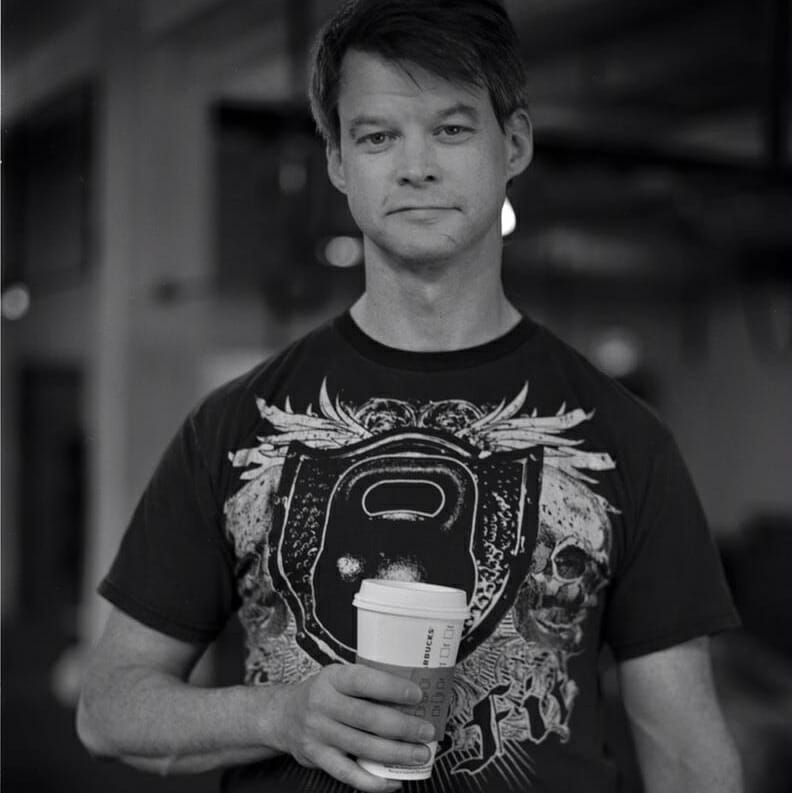
Court Wing has been a professional in the performance and rehab space for the last 30 years. Coming from a performing and martial arts background, Court served as a live-in apprentice to the US Chief Instructor for Ki-Aikido for five years, going on to win the gold medal for the International Competitors Division in Japan in 2000 and achieving the rank of 3rd degree black belt. In 2004, Court became the co-founder of New York’s largest and oldest crossfit gym, and has been featured in the New York Times, Sunday Routine, Men’s Fitness, and USA Today. He is also a certified Z-Health Master Trainer, using the latest interventions in applied neuro-physiology for remarkable improvements in pain, performance, and rehabilitation. You can find out more on his website: https://courtwing.com .
